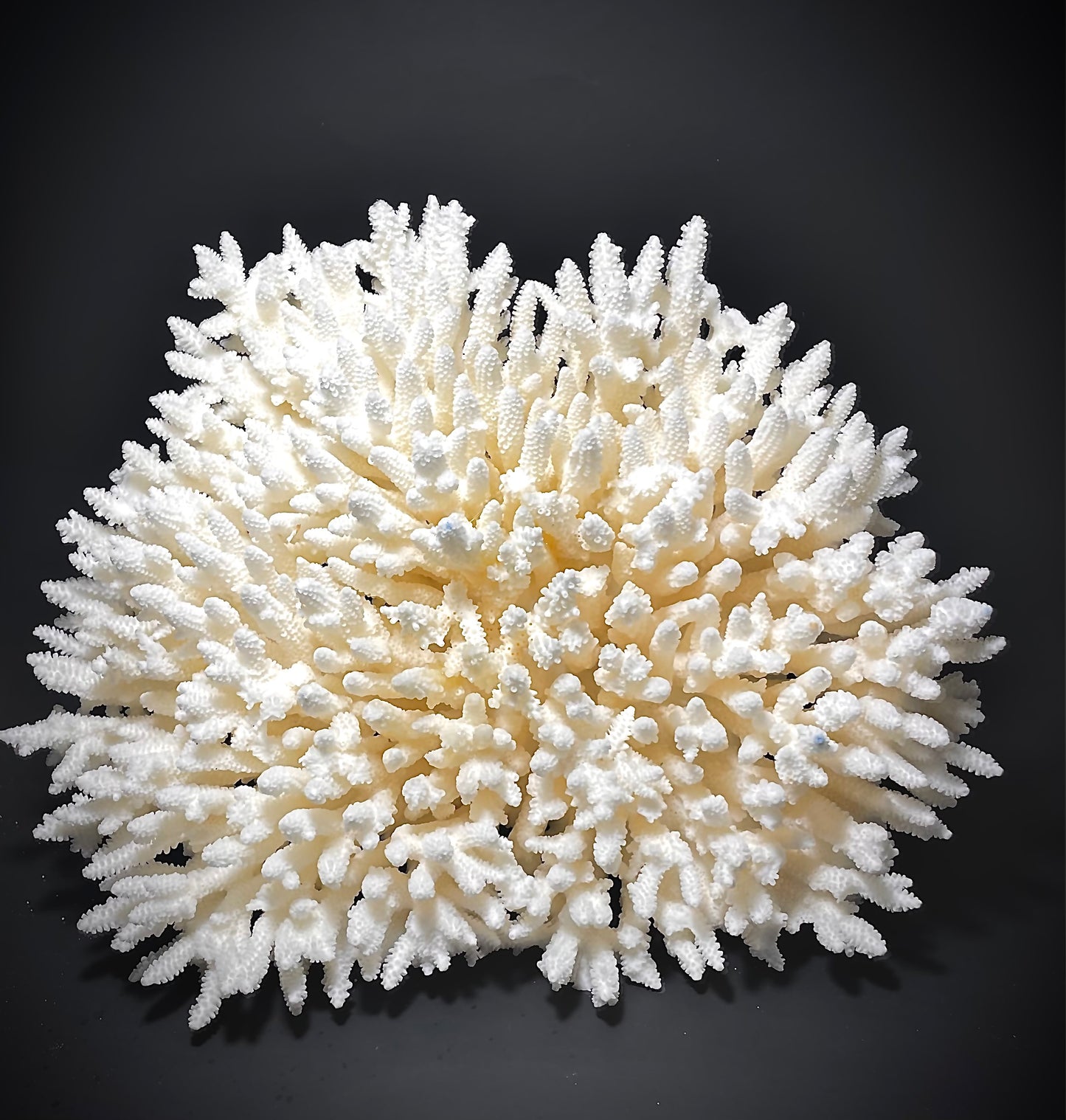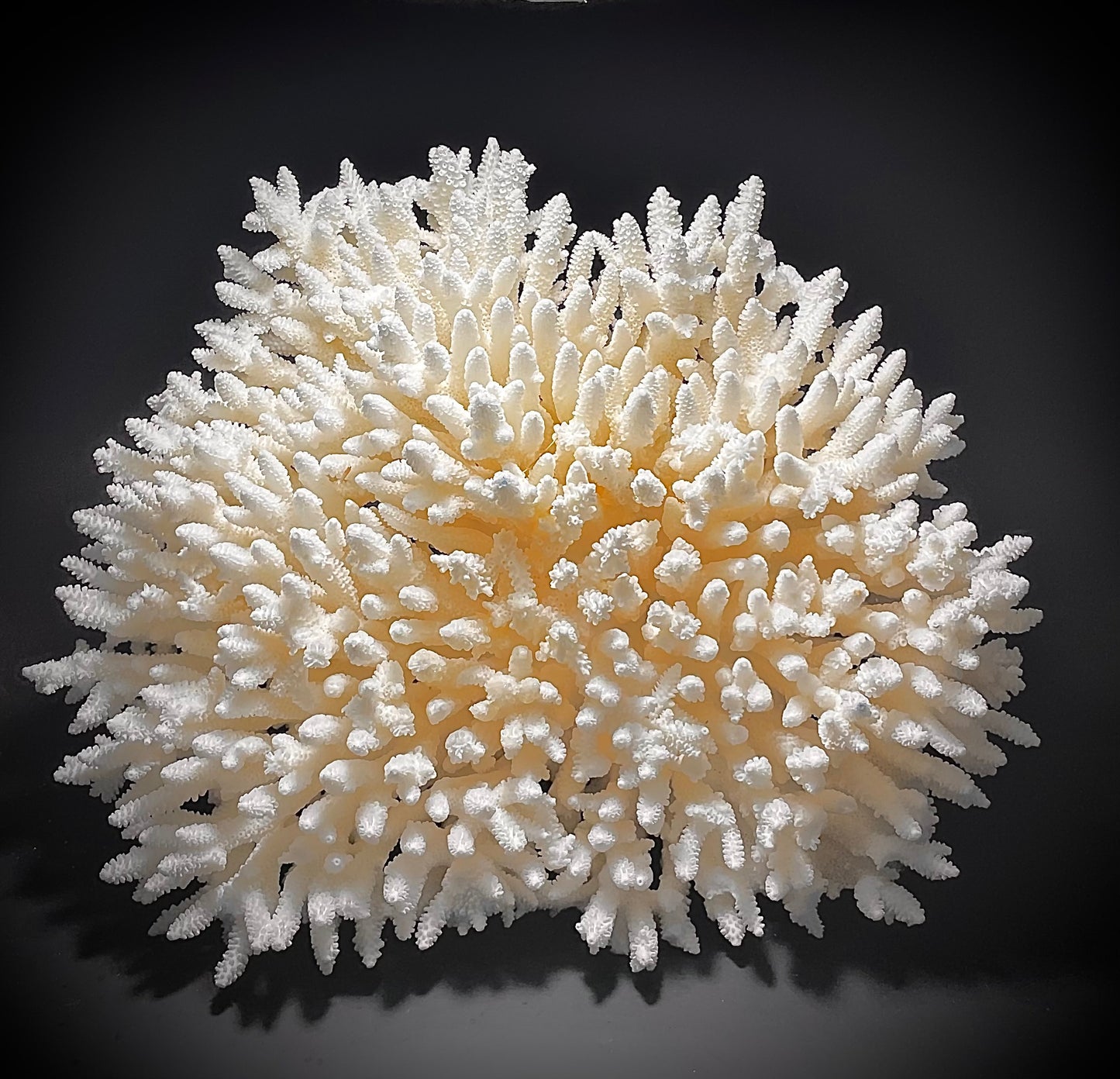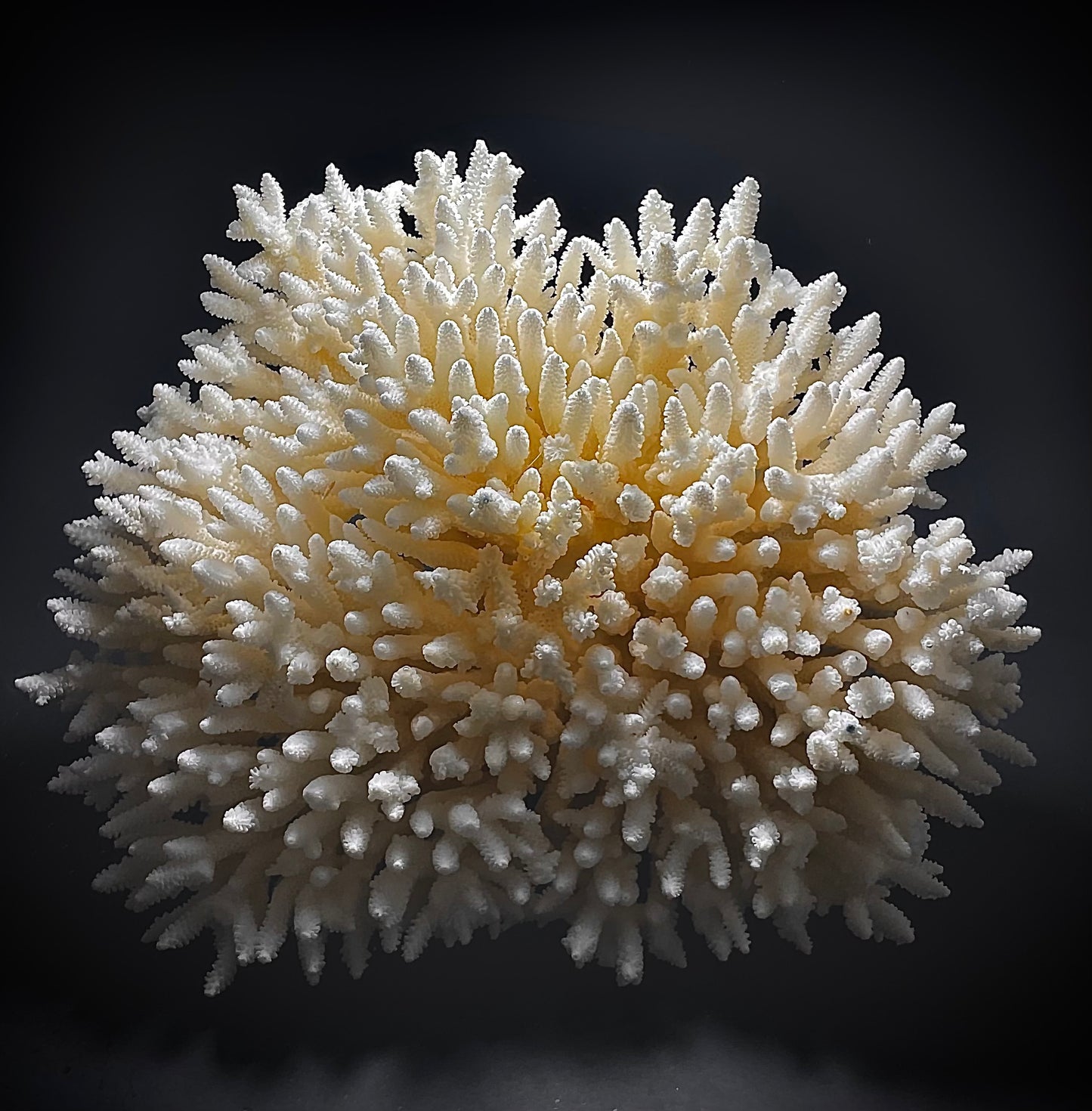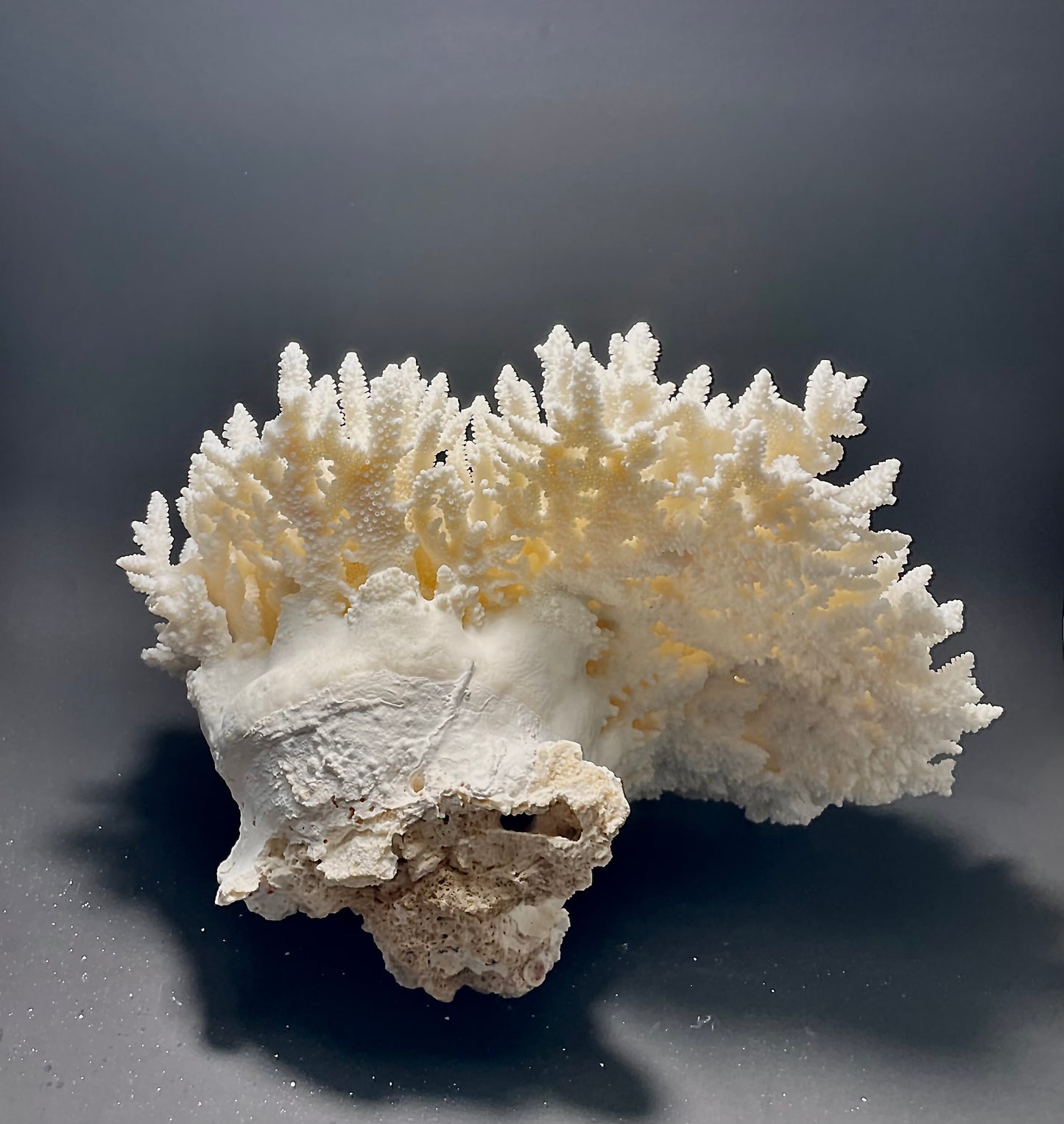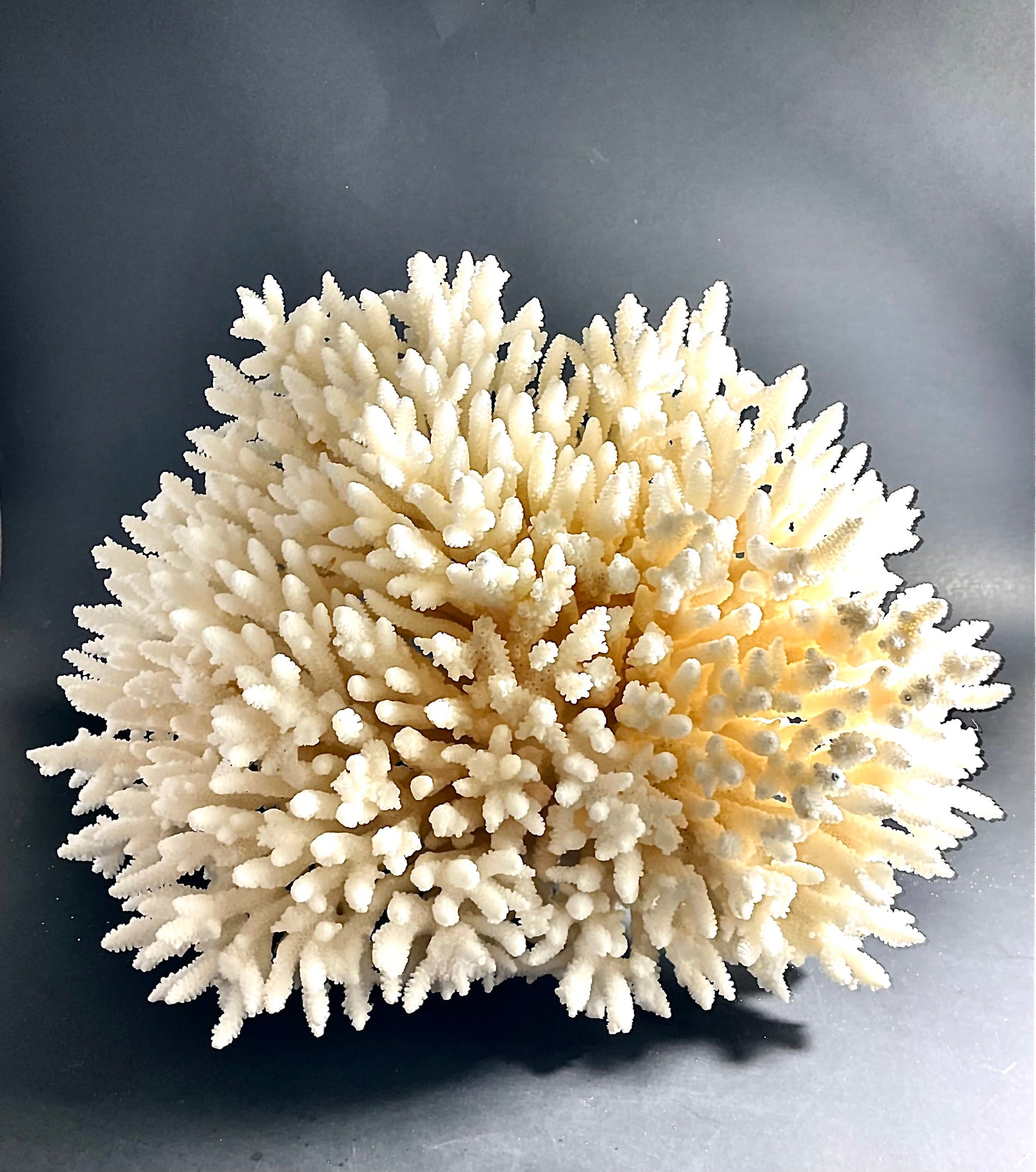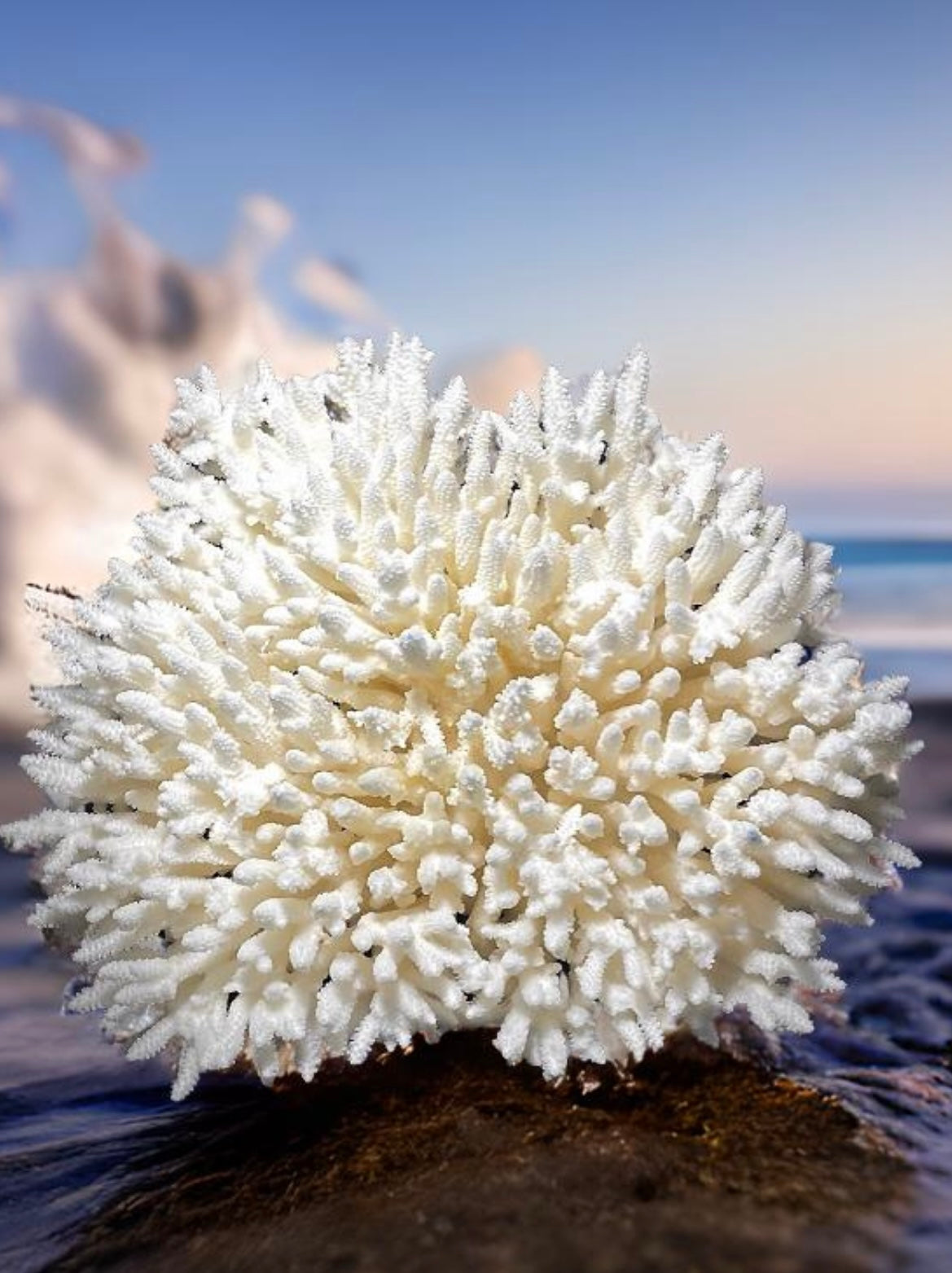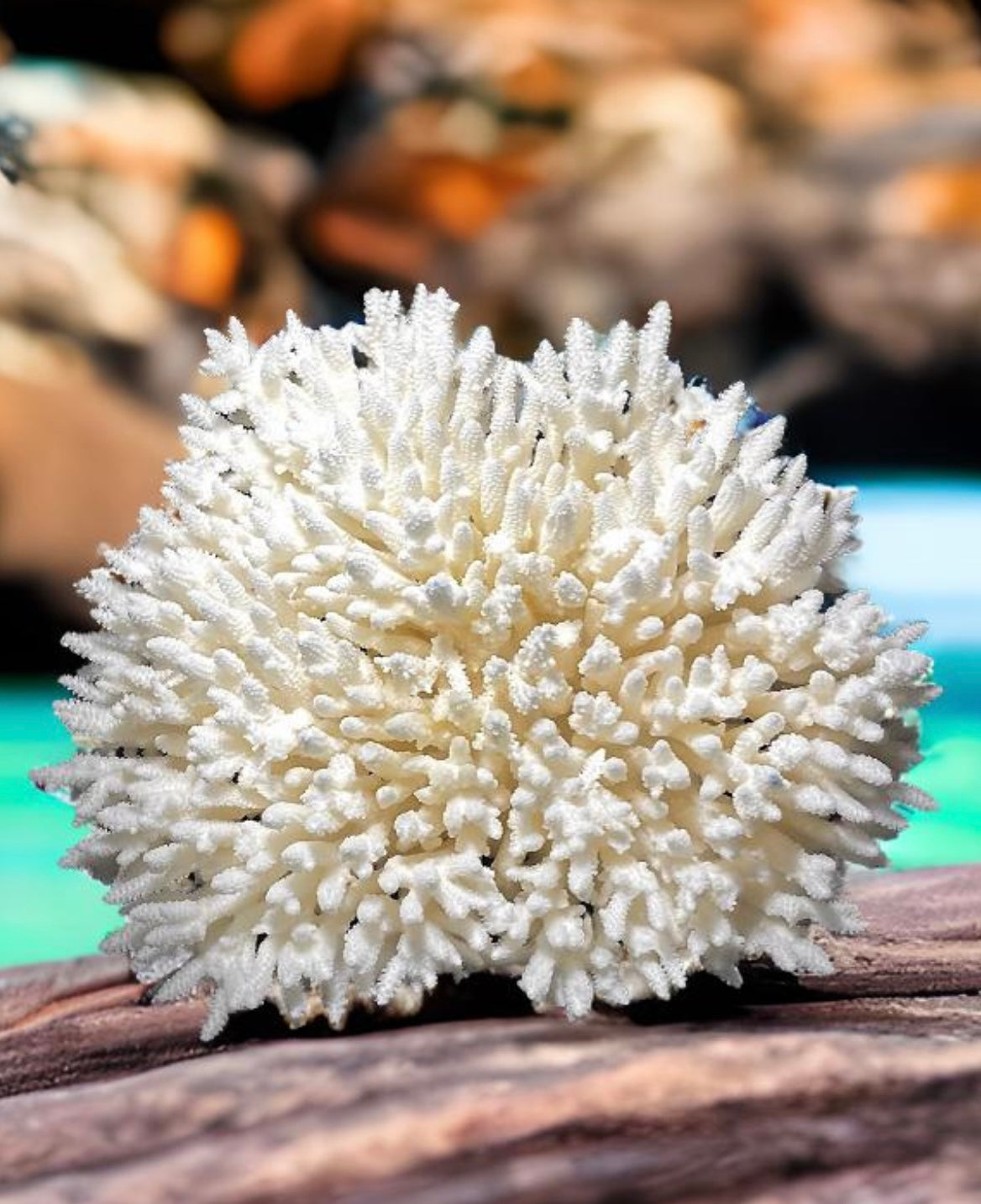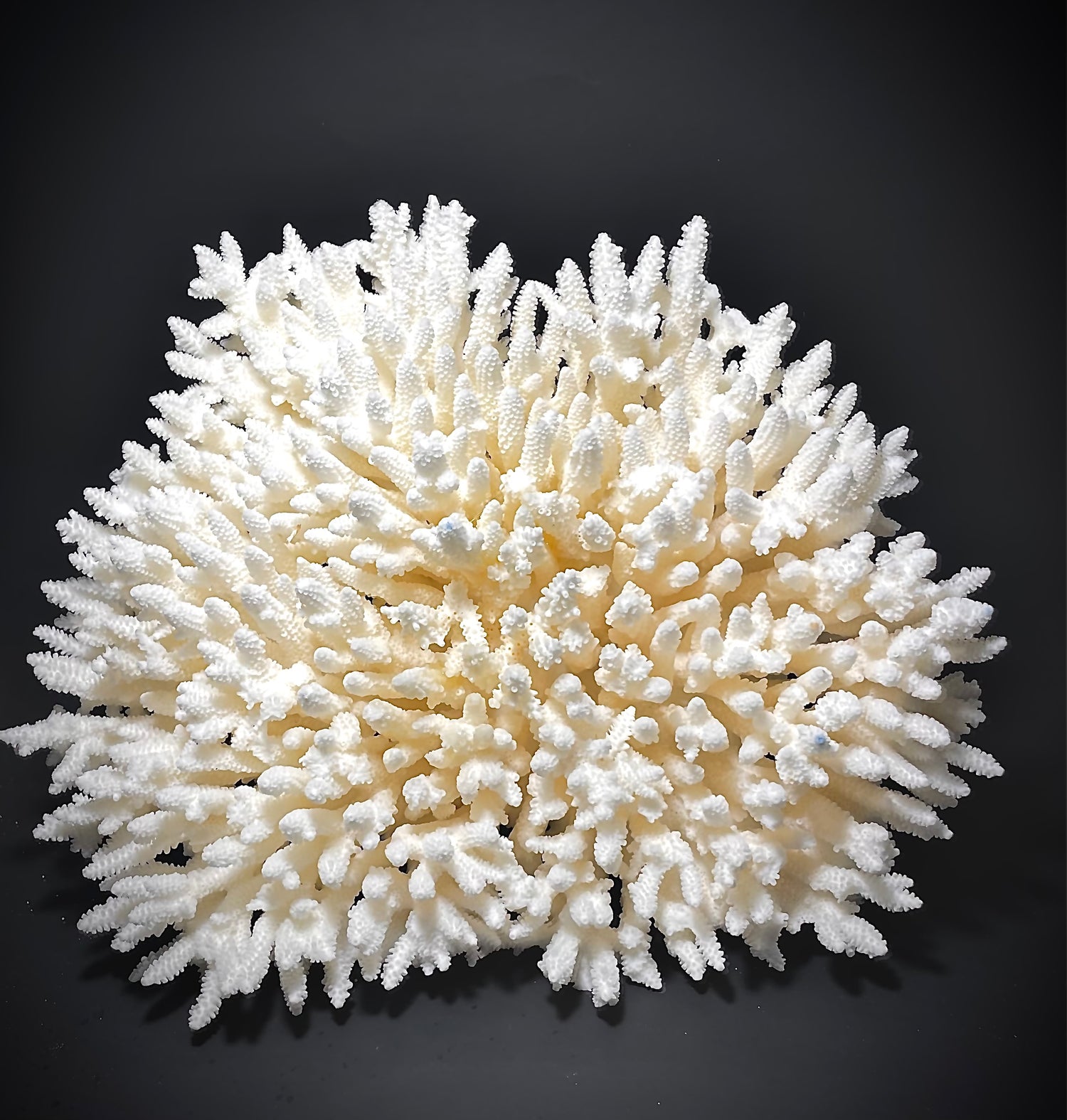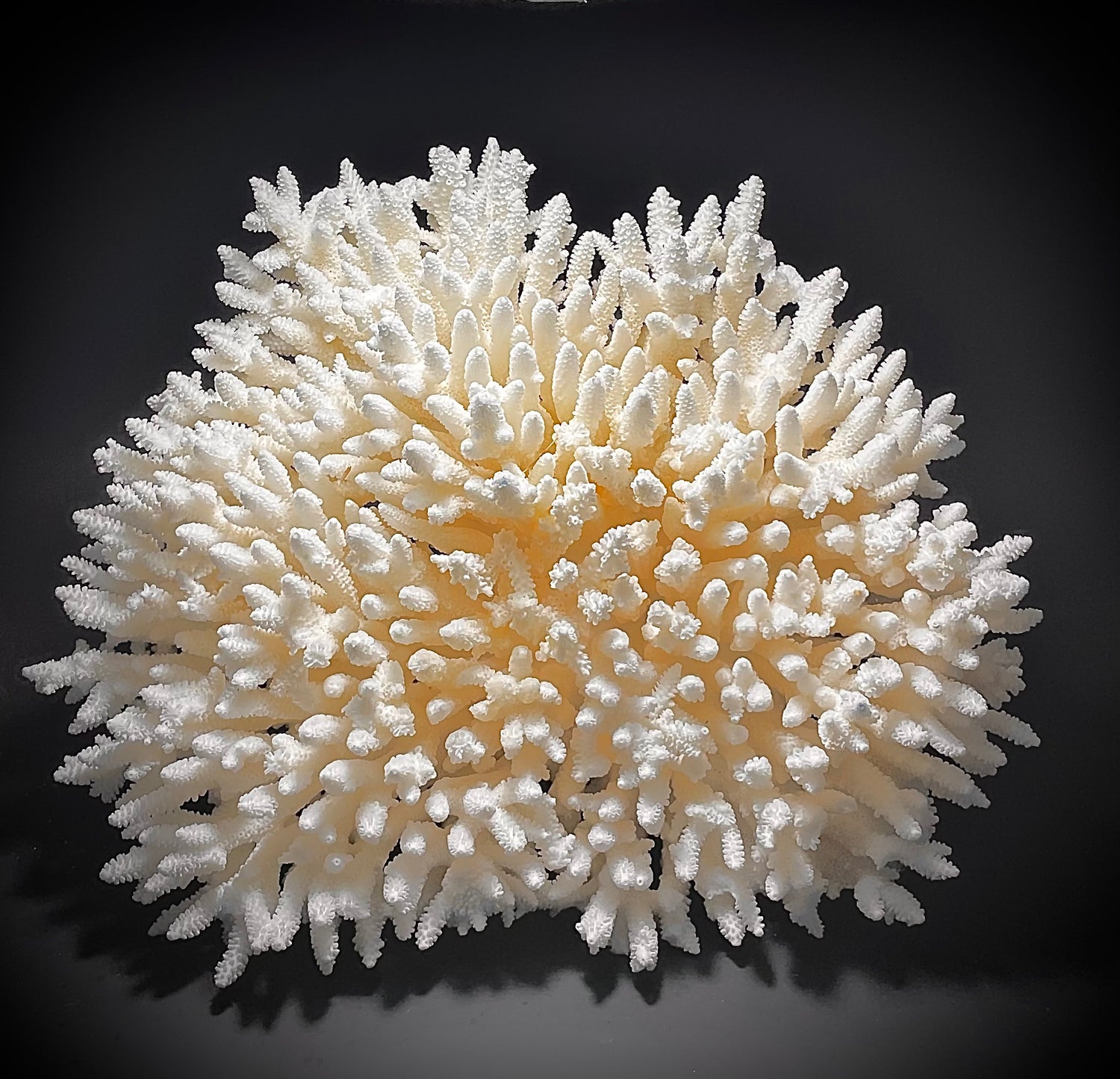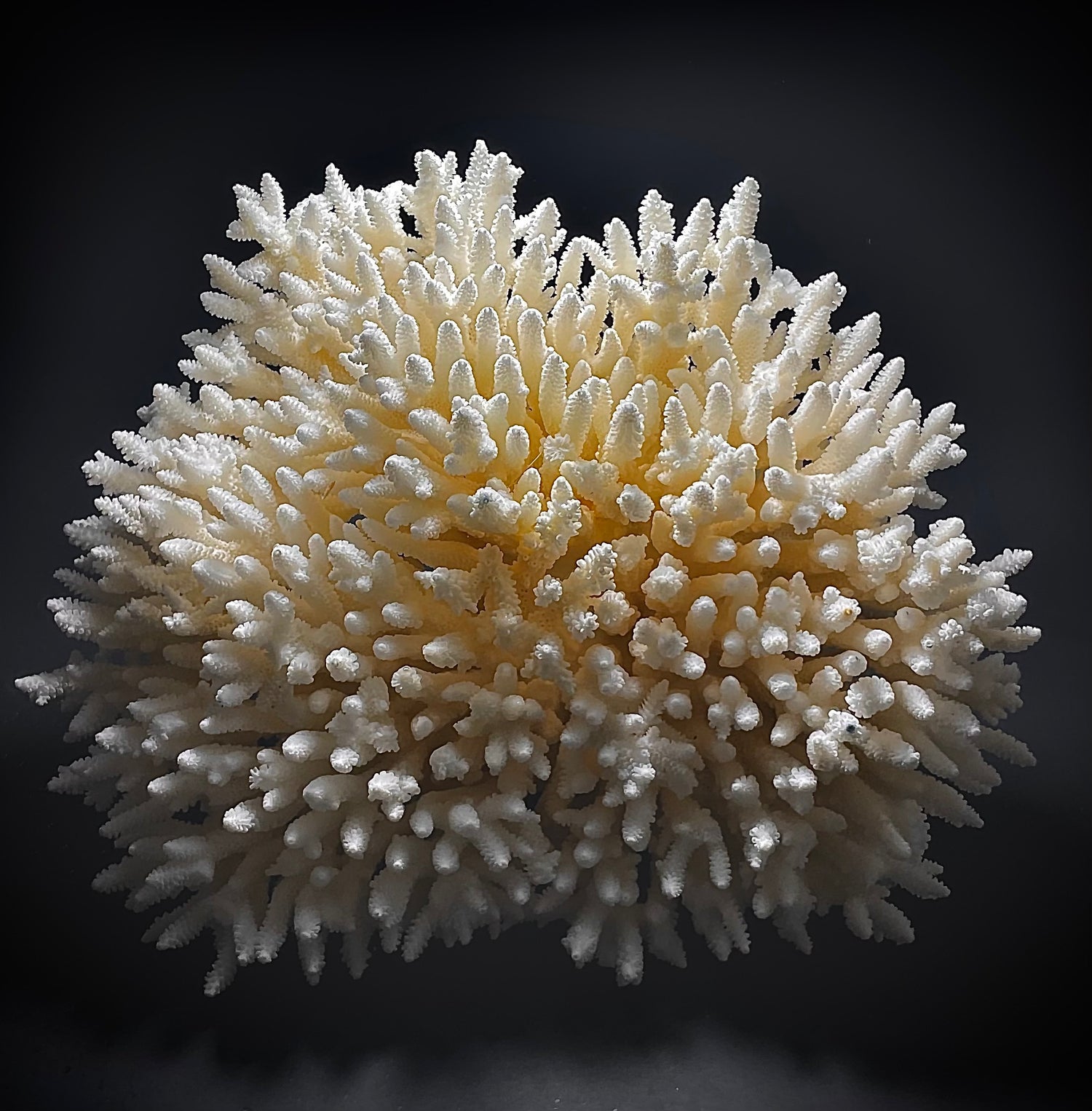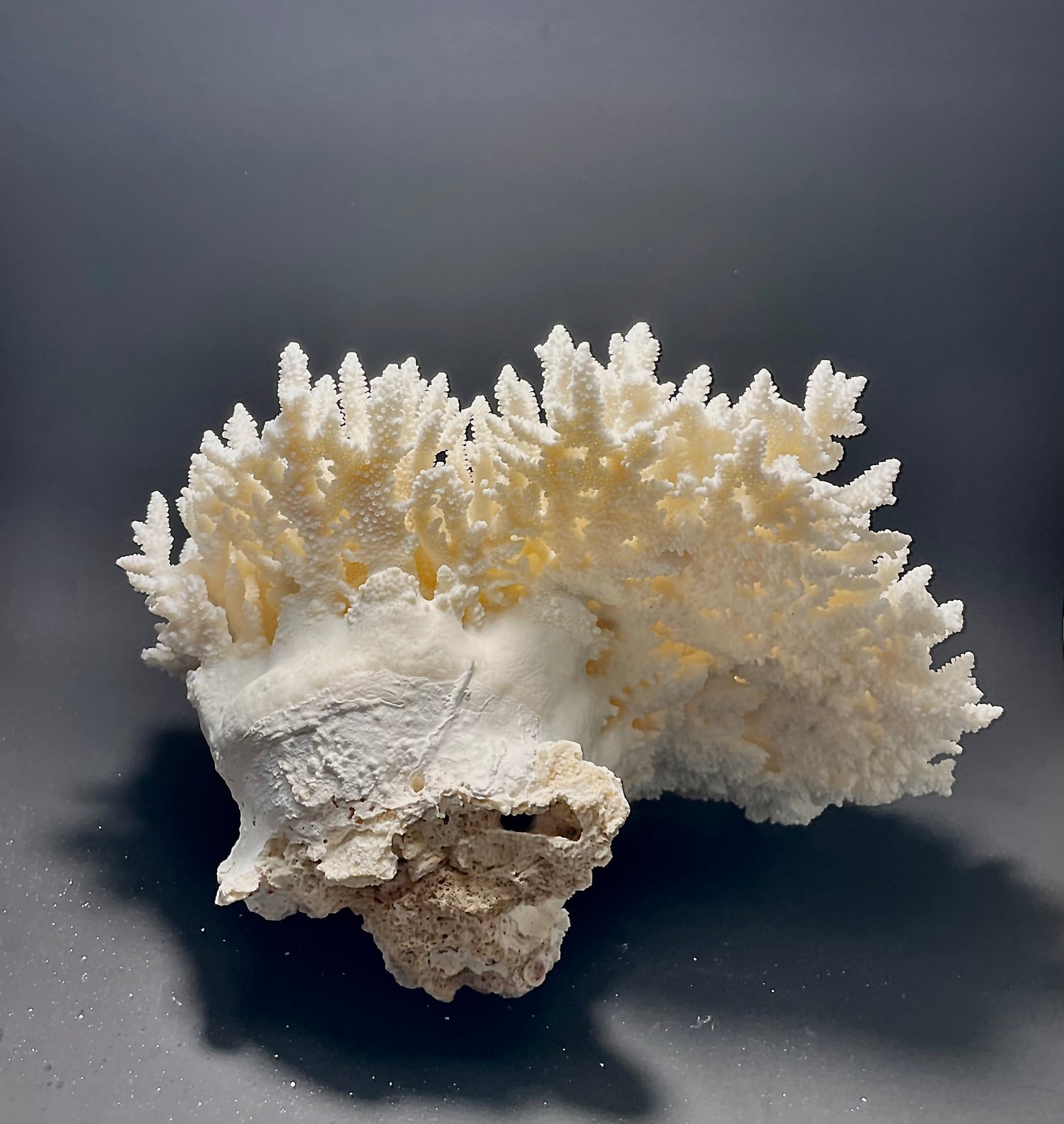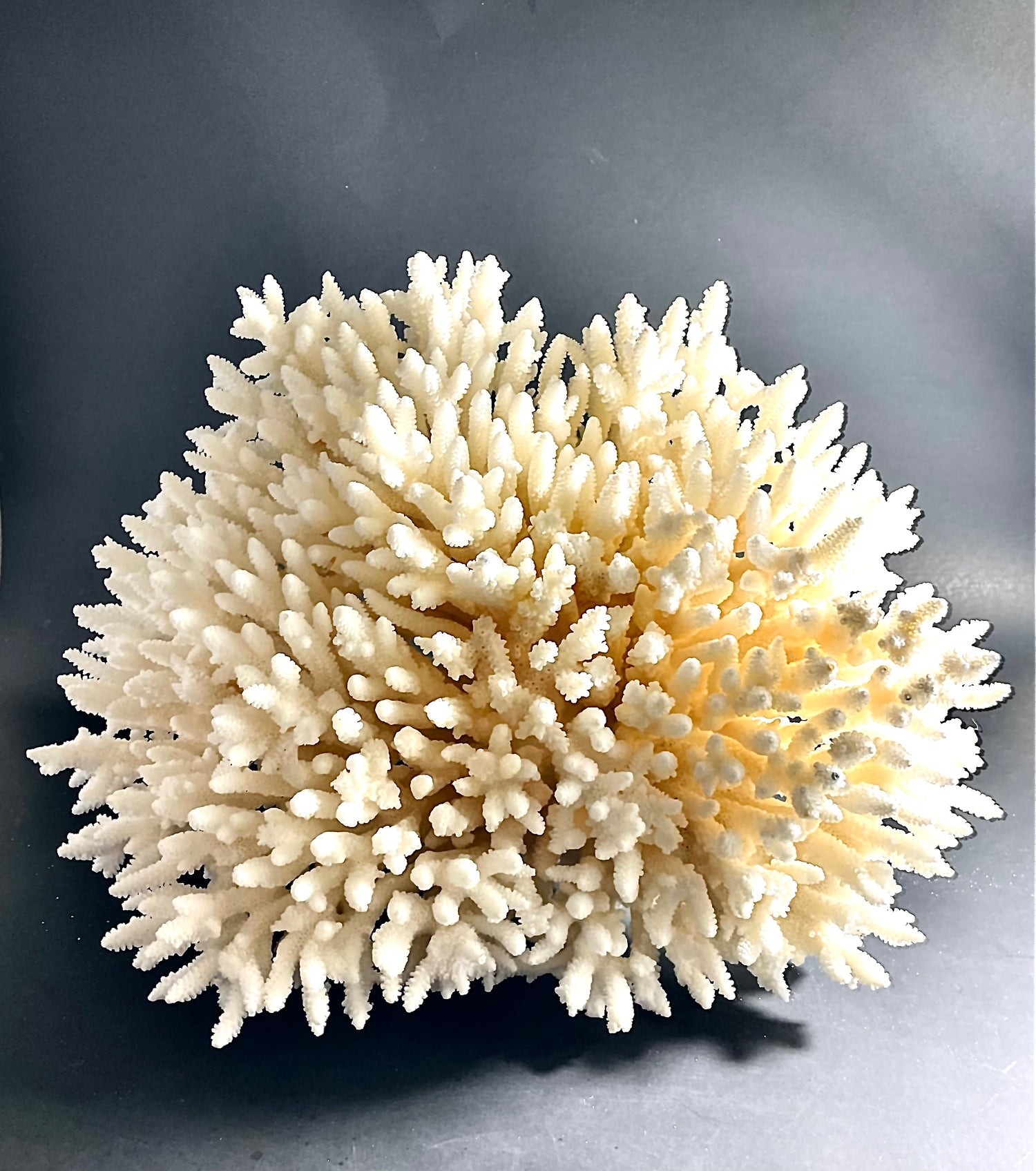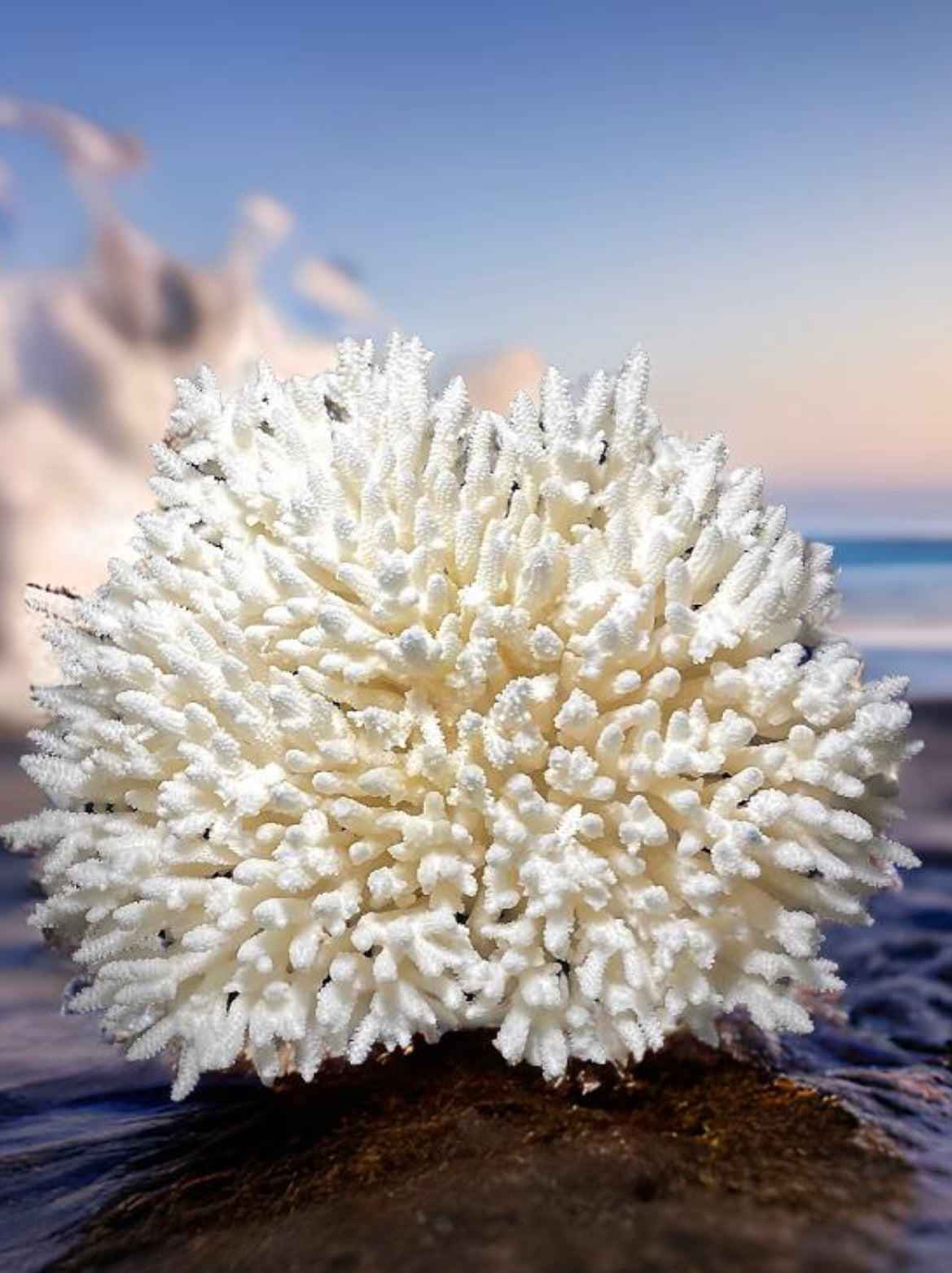Table Coral (14”x13”)
- Regular price
- $99.00
- Regular price
-
- Sale price
- $99.00
- Unit price
- per
Couldn't load pickup availability
The ivory bush coral is a true stony coral that lives on both shallow and deep coral reefs. Like all corals, this species is closely related to anemones, jellyfishes, and other animals in the Phylum Cnidaria. As this species is known to occur in both shallow and deep waters, different populations utilize different means of obtaining food resources.
Shallow-water populations are known to have symbiotic algae living within their cells, providing the corals with excess energy that they make via photosynthesis (the use of sunlight to convert carbon dioxide into food/energy). Nearly all species of shallow-water corals and several other groups of reef invertebrates have symbiotic relationships with these algae. On deep reefs, however, there is not sufficient sunlight to undergo photosynthesis, so ivory bush corals there instead obtain all of their energy by filter feeding individual plankton from the water that flows along deep-sea currents.
Wherever it lives, the ivory bush coral builds structure that provides habitat for hundreds of other species of invertebrates and fishes, including several that are commercially important. In some areas, this species can be the most common coral on reefs. Typically, this coral is found at depths of 150-500 feet (~50-150 m), but individuals can be found on shallow reefs as well. The densest ivory bush coral “forests” are located at depths of approximately 150-300 feet (~50-100 m).
Like all stony corals, the ivory bush coral builds a skeleton of calcium carbonate – a compound that will become increasingly more rare as the ocean acidifies (a phenomenon caused by the ocean’s absorption of acidic carbon dioxide from the atmosphere). As deep waters are naturally more acidic than shallow waters, deep-water corals are particularly vulnerable to this problem. Unless people cut carbon dioxide emissions, scientists predict the waters in which deep-water corals live may eventually become acidic enough to literally dissolve their skeletons. Acidification not only risks the survival of this and other corals but also the high numbers of other species that rely on coral reef structure as their primary habitat.
Share

